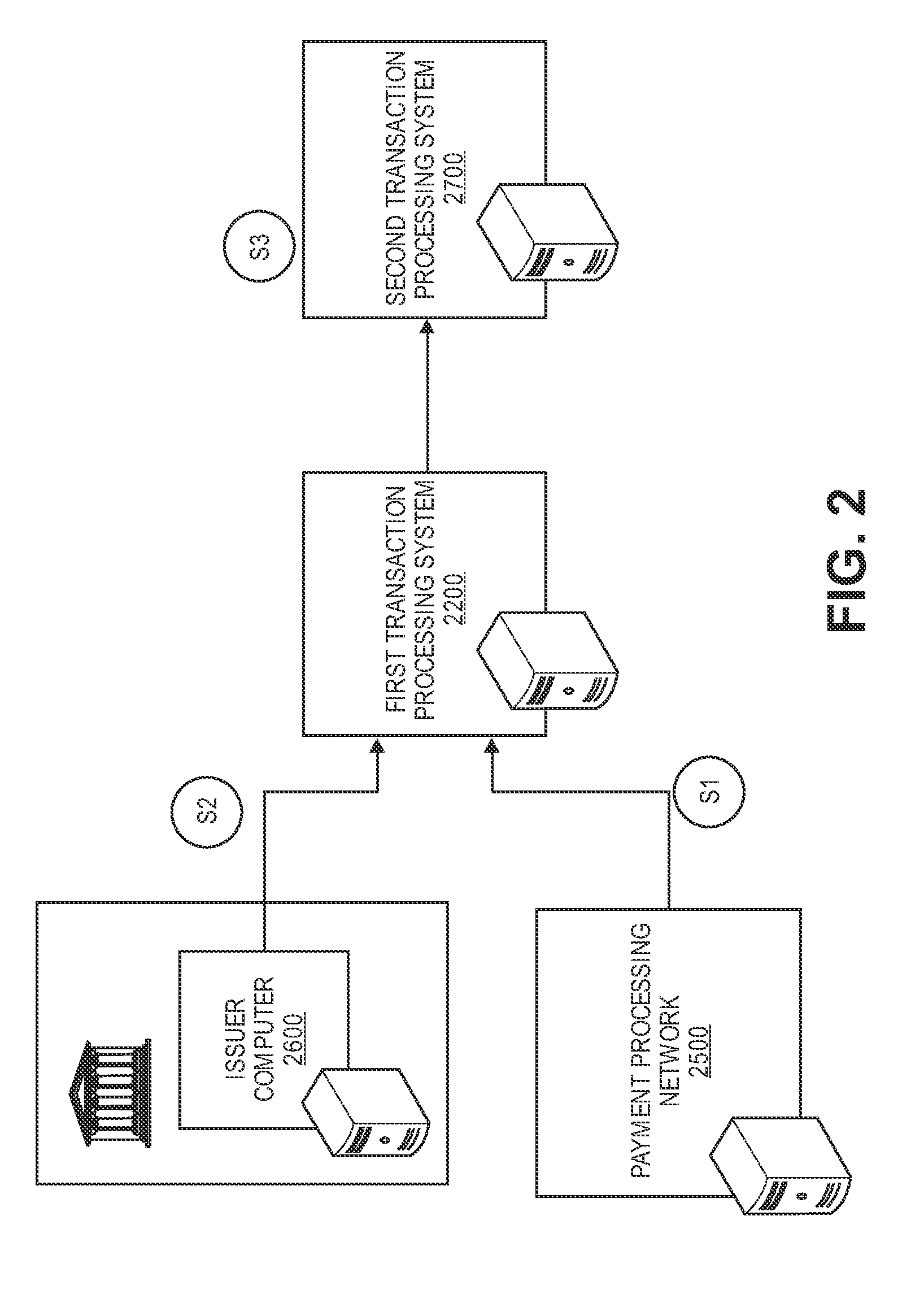Method and System for Fraud Detection and Notification
a fraud detection and notification system technology, applied in the field of methods and systems for fraud detection and notification, can solve the problems of slow and difficult manual detection of fraud in card-present transactions, increased fraud rate, identity theft becoming an increasingly common problem,
- Summary
- Abstract
- Description
- Claims
- Application Information
AI Technical Summary
Benefits of technology
Problems solved by technology
Method used
Image
Examples
Embodiment Construction
[0027]Financial transactions made be conducted in many ways, including as card-present transactions (e.g., using a credit card to make a purchase at a retail store) or as card-not-present transactions (e.g., using a credit card identifier to make a purchase over the Internet). Financial transactions are typically processed by payment processing systems or transaction processing systems. Payment and transaction processing systems traditionally involve a process whereby a merchant / acquirer access device (e.g., point of sale (POS) device) for card-present transactions, or another payment channel for card-not-present transactions, such as the internet, is used integrally as part of a transaction initiation process. For example, in a card-present transaction, a consumer making a purchase at a merchant's store may present a payment card (e.g., credit card) to the merchant, who then swipes the card using a card reader that is integrated with the merchant's access device.
[0028]Transaction d...
PUM
 Login to View More
Login to View More Abstract
Description
Claims
Application Information
 Login to View More
Login to View More - R&D
- Intellectual Property
- Life Sciences
- Materials
- Tech Scout
- Unparalleled Data Quality
- Higher Quality Content
- 60% Fewer Hallucinations
Browse by: Latest US Patents, China's latest patents, Technical Efficacy Thesaurus, Application Domain, Technology Topic, Popular Technical Reports.
© 2025 PatSnap. All rights reserved.Legal|Privacy policy|Modern Slavery Act Transparency Statement|Sitemap|About US| Contact US: help@patsnap.com



